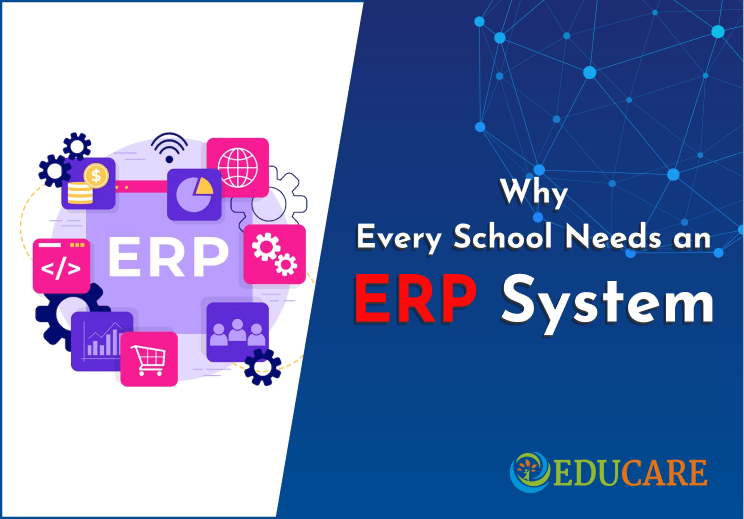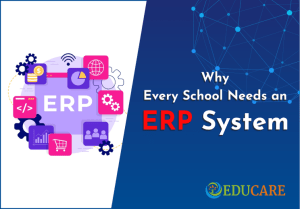1. Introduction
An Enterprise Resource Planning (ERP) system is a software application that integrates
and automates all the core processes of and organization, such as accounting, Human
Resources (HR), and Inventory Management.
An ERP system is essential for schools
because it helps them manage their finances, staff,and students more efficiently. It
also enables schools to forecast their budgets moreaccurately and plan for future
growth.
ERP systems are not just for large organizations – they can be adapted to the
needs of small and medium-sized schools. In fact, many ERP vendors offer scaled-down
versions of their software specifically for educational institutions.
If you’re
looking for a way to streamline your school’s operations and improve its overall
efficiency, then an ERP system is the way to go.
2. What is an ERP system?
An ERP system is a comprehensive software solution that integrates and automates all the
core processes of an organization. It is designed to provide visibility into all the
operational aspects of an organization and help organizations stay organized and run
efficiently.
The key components of an ERP system include Enterprise Performance
Management (EPM), Supply Chain Management (SCM), Human Resource Management (HRM),
Customer Relationship Management (CRM), and Business Process Management (BPM). It
provides
businesses with a centralized, unified platform to manage all their data,
processes, operations, and resources.
The main goal of an ERP system is to help
organizations streamline and optimize their operations. It provides real-time insights
into an organization’s operations and financial position, which allows for better
decision-making. It also automates key processes such as accounting, inventory
management, employee management, customer relationship management, and more.
By
leveraging an ERP system, an organization can become more efficient, save time and
resources, reduce operational costs, and boost their overall productivity. An ERP system
canthus be an invaluable asset for any school looking to get ahead.
3. The benefits of an ERP system
An ERP system can bring a plethora of benefits to the school. Here are some of the key
benefits of having an ERP system for schools:
1. Enhanced Visibility: An ERP system
provides real-time insights into the organization’s operations and financial position.
It helps the staff gain a better understanding of the school’s operations. This
can be beneficial for decision-making and forecasting.
2. Improved Efficiency: An ERP
system helps streamline and optimize operations. Automation of key processes such as
accounting, employee management, customer relationship management, and inventory
management help reduces manual labor and errors.
3. Resource and Cost Savings: An ERP
system allows for more efficient and effective usage of resources and reduces
operational costs.
Improved Communication: An ERP system provides a unified platform
for communication between students, parents, staff, and other stakeholders in the
school. This helps improve collaboration and increases the overall efficiency of the
organization.
4. Increased Security: An ERP system provides enhanced security for the
important data and information in the school. It helps protect the student’s data
from being accessed by unauthorized people.
5. An ERP system can thus be a valuable
asset for any school. It can help make operations more efficient and reduce operational
costs, while increasing the overall security of the school.
4. Implementing an ERP system in your school
Implementing an ERP system in your school requires upfront planning and preparation. Here
are the 7 key steps to implement an ERP system in your school:
1. Identify The Need:
The first step is to identify the pain points that your school is facing and how an ERP
system can help solve them. This will help define the scope of the project and the
objectives you are aiming to achieve.
2. Analyst The Process: Once you have
identified the need, the next step is to analyze the current processes in the
organization. This will help you understand how the organization works and identify
areas where an ERP system can be effective.
3. Create A Detailed Plan: The next step
is to create a detailed plan that outlines how you will implement the ERP system. This
should include a timeline, budget, and resources that you will need.
4. Select The
ERP System: An important step is to select the ERP system that fits your organization’s
needs best. Consider features, cost, and customer support when making the selection.
5.
Train The Staff: It is important to ensure that the staff is comfortable and aware of
the new ERP system. Make sure to provide enough time and resources to train them on the
new system.
6. Test & Debug: Before officially deploying the system, it is
important to thoroughly test the system for any bugs or errors.
7. Implement &
Monitor
5. Why an ERP system is a good investment for your school
The need for ERP systems has become increasingly apparent in educational institutions,
especially since the world has gone online. Having an ERP system is beneficial for a
school, as it helps to optimize business processes and manage data efficiently. Here are
5 reasons why investing in an ERP system is good for your school:
1. Streamlining
Data Management: ERP systems allow schools to store and manage all their data, such as
student information, course catalogs, grades, and staff information, in one place. This
eliminates potential data entry errors and streamlines processes.
2. Enhances Student
And Faculty Experience: ERP systems are designed to provide an enhanced user experience
for both students and faculty. Through an organized dashboard, they can access their
information quickly and easily. This will also save time and help to create a more
organized learning environment.
3. Automates and Streamlines Processes: ERP systems
have the ability to automate many of the manual processes in a school. This will help to
streamline processes and free up staff resources to focus on more important tasks.
4.
Improves Student Learning And Engagement: ERP systems can track student progress and
engagement, allowing for the implementation of personalized learning strategies and
activities. This can help to improve student learning and the overall school experience.
5.
Cost Effective: Investing in an ERP system may seem costly up front, but it pays for
itself in the long run. By automating processes


